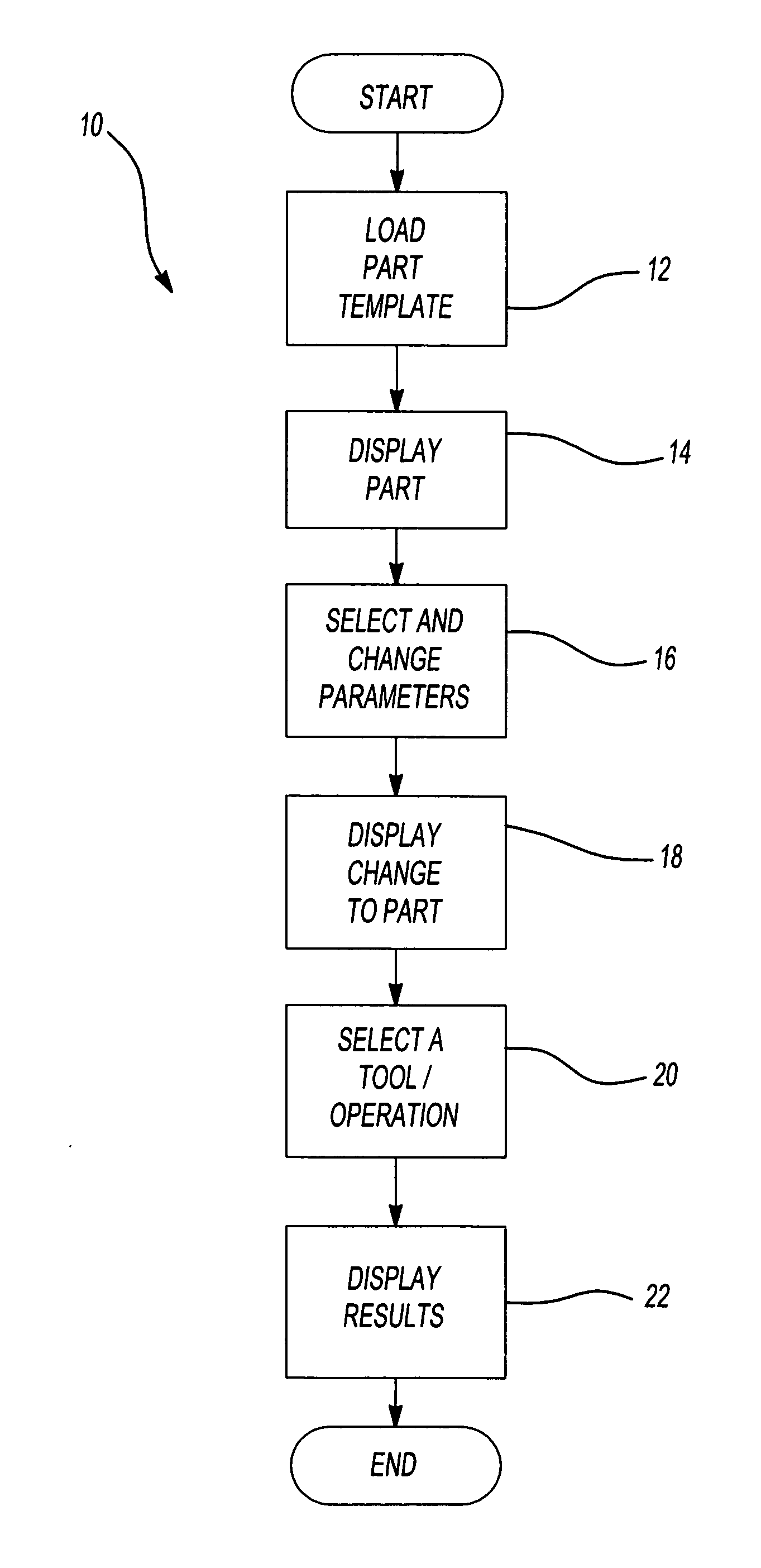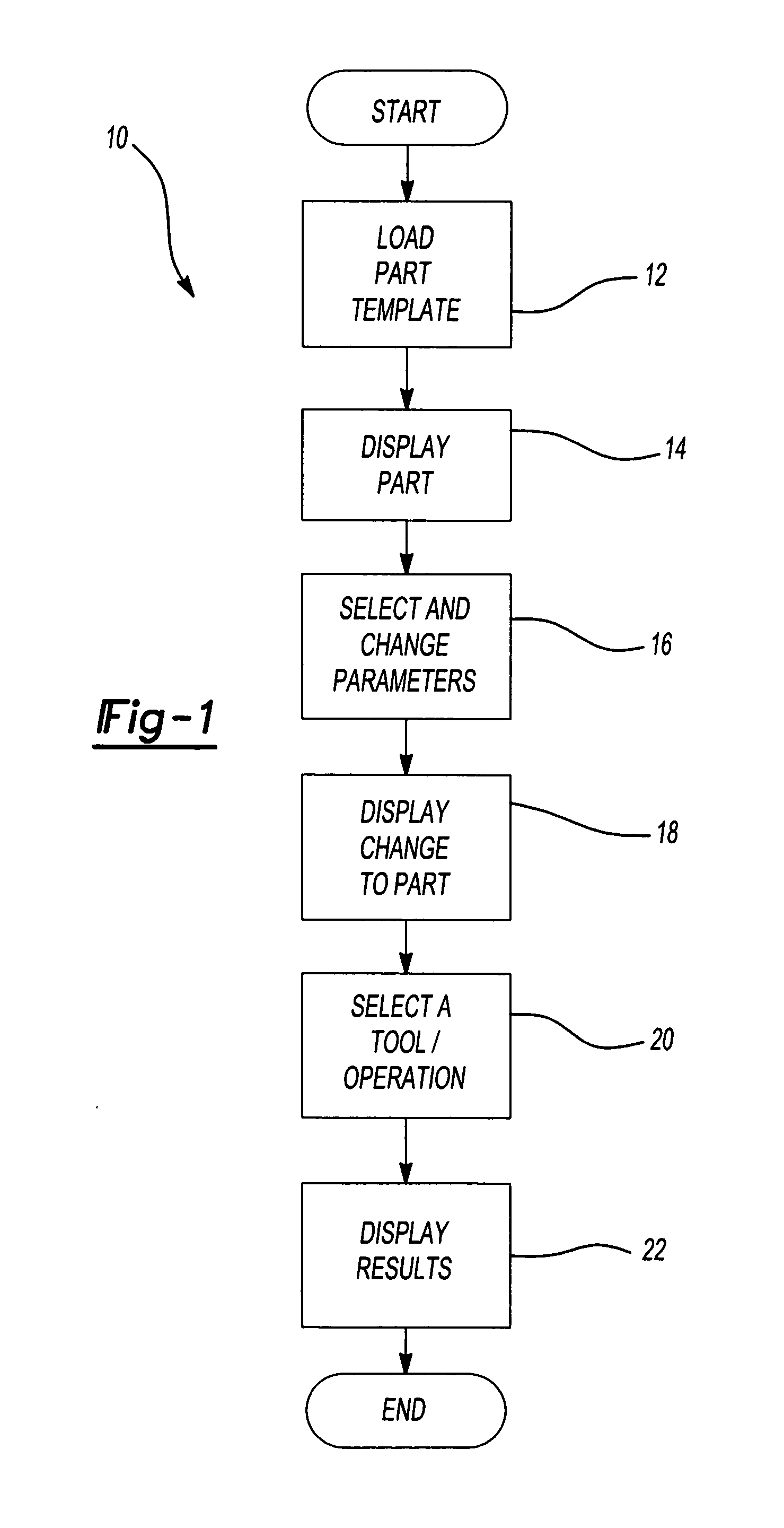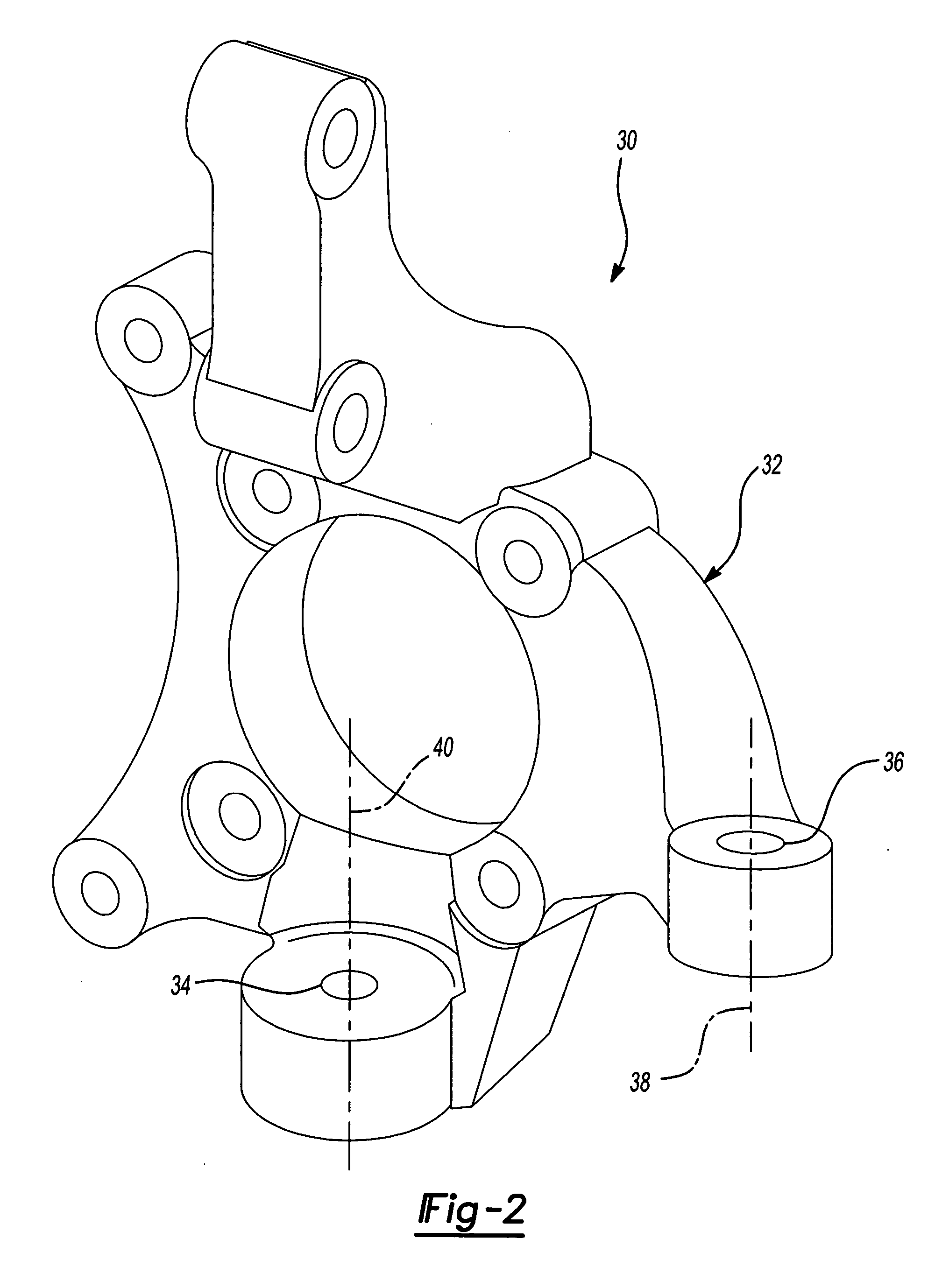Concurrent modeling technique for a part and its tooling
a technology of concomitant modeling and parts, applied in the field of automotive components and its tooling, can solve the problems of limited manufacturing tooling capabilities of mechanical parts, difficulty in initial design, manufacturing and tooling of parts, and difficulty in performing the actions associated with machining, handling and assembling of parts
- Summary
- Abstract
- Description
- Claims
- Application Information
AI Technical Summary
Benefits of technology
Problems solved by technology
Method used
Image
Examples
Embodiment Construction
[0012] The following description of the preferred embodiments is merely exemplary in nature and is in no way intended to limit the invention, its application, or uses.
[0013] An automated tool and part modeling algorithm 10 is shown in FIG. 1. At step 12, a user selects a part and the algorithm 10 loads the part template. In the preferred embodiment, the user selects the part at a graphical user interface. The part template may include any suitable reference information indicating the dimensions of the part. For example, the part template may include, but is not limited to, parametric tooling data and the geometry of the tool and / or part. The part is displayed three-dimensionally to the user at the graphical user interface at step 14. At step 16, the user selects and changes a parameter in order to modify a particular feature or dimension of the part. For example, the user may change a location of a fastener, such as a bolt. The graphical user interface redisplays the part, reflecti...
PUM
 Login to View More
Login to View More Abstract
Description
Claims
Application Information
 Login to View More
Login to View More - R&D
- Intellectual Property
- Life Sciences
- Materials
- Tech Scout
- Unparalleled Data Quality
- Higher Quality Content
- 60% Fewer Hallucinations
Browse by: Latest US Patents, China's latest patents, Technical Efficacy Thesaurus, Application Domain, Technology Topic, Popular Technical Reports.
© 2025 PatSnap. All rights reserved.Legal|Privacy policy|Modern Slavery Act Transparency Statement|Sitemap|About US| Contact US: help@patsnap.com



